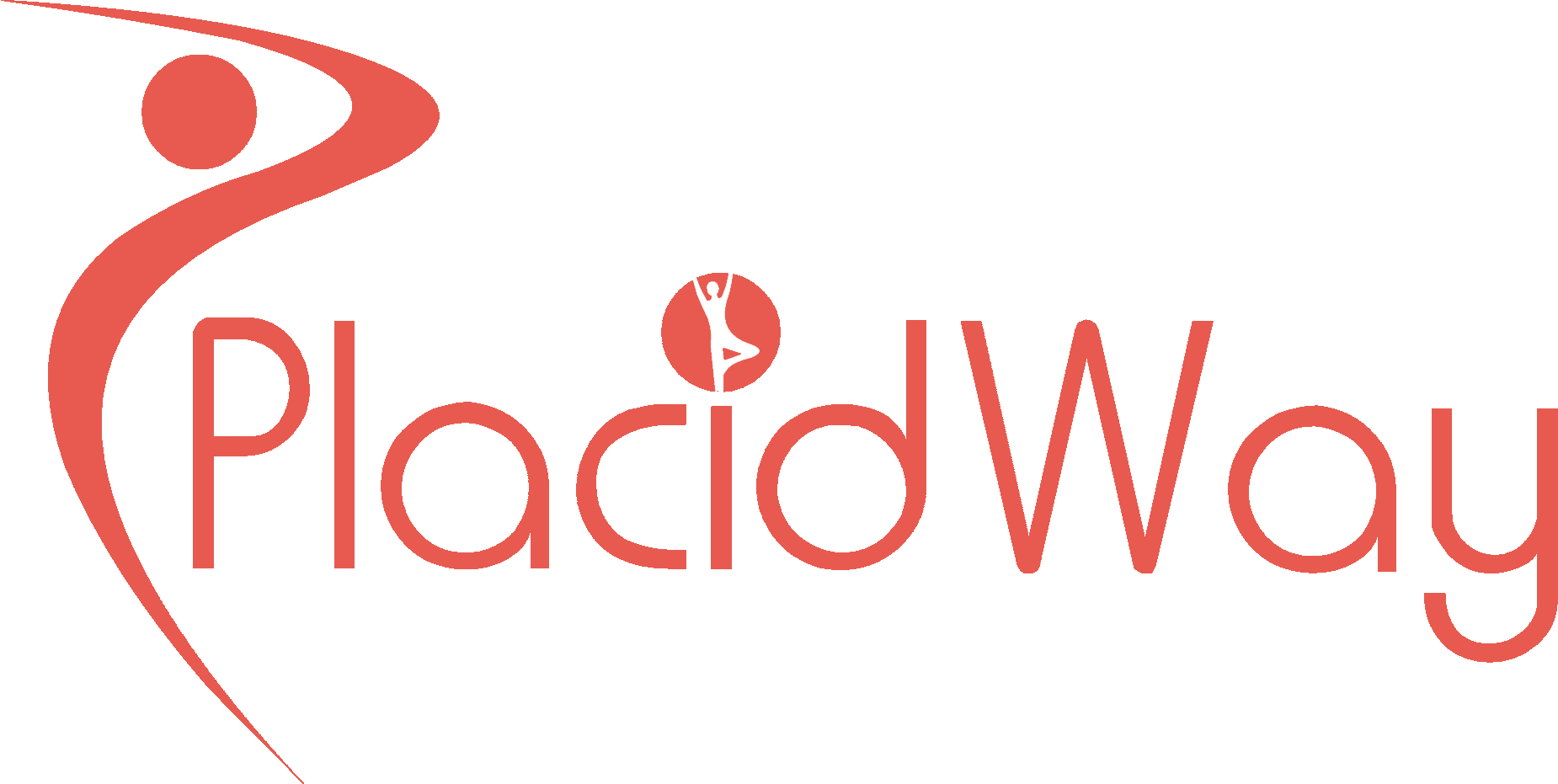
Table of Content
Do you ever wonder if there's a way to heal your body from the inside out? Many people suffering from tough diseases or injuries dream of repair and recovery. What if your own body held the key?
Welcome to the exciting world of stem cells and stem cell therapy, a field that could change how we approach healing.
Stem cells are like the body's master builders. They are special cells with amazing potential. Let’s explore what they are, how they work, and what stem cell therapy might mean for you or your loved ones. It's a journey into the future of medicine, happening right now.
Key Insights at a Glance
- Stem cell therapy offers regenerative solutions for chronic conditions.
- Traveling abroad for stem cell therapy can save up to 70% on costs.
- Advanced treatments for conditions like Autism, MS, and diabetes are now available internationally.
- Countries like Mexico, Turkey, and Thailand are leaders in safe, accredited stem cell treatments.
What is Stem Cell Therapy?
So, what exactly are these powerful cells? Stem cell therapy is a regenerative treatment that uses the body’s own stem cells to repair damaged tissues and treat diseases. Stem cells are unique in their ability to transform into specialized cell types, making them valuable for targeting a wide range of conditions, including neurological disorders, immune diseases, joint injuries, and chronic illnesses. By encouraging tissue repair and reducing inflammation, stem cell therapy offers a promising, minimally invasive alternative for healing and recovery.
Symptoms Treated by Stem Cell Therapy
- Chronic pain and inflammation in joints or organs
- Neurological symptoms like tremors and muscle weakness
- Difficulty breathing, often associated with COPD
- Loss of motor skills or cognitive function
- Uncontrolled blood sugar levels in diabetes
The Importance and Potential of Stem Cells
There's a lot of excitement around stem cells, and for good reason. Scientists and doctors see incredible potential in them. Why? Because understanding stem cells could unlock new ways to treat diseases and injuries.
Here’s why stem cells are generating so much interest:
1. Understanding How Diseases Happen:
By watching stem cells mature into specialized cells, researchers can gain insights into how diseases like cancer, diabetes, or birth defects develop. This understanding is the first step toward finding better treatments.
2. Regenerative Medicine – Healing from Within:
This is perhaps the most exciting area. The idea is to use stem cells to create healthy new cells and tissues to replace those damaged by illness or injury. Imagine repairing a heart after a heart attack, restoring movement after a spinal cord injury, or reversing the effects of diseases like Parkinson's or Type 1 diabetes. Millions suffer from conditions that stem cell therapy aims to address one day.
3. Testing New Drugs Safely:
Before testing drugs on people, researchers can use stem cell-derived tissues (like liver or heart cells) to check for safety and effectiveness. This could make drug development faster and safer.
Stem cells offer hope for many conditions that currently have limited or no effective treatments. They represent a frontier in medicine focused on repair and regeneration, not just managing symptoms.
Latest Types of Stem Cell Therapy Available Worldwide
Here are the types of Regenerative Stem Cell Therapy Research:
1. Embryonic stem cell therapy
- Source: Derived from early-stage embryos.
- Potential: Can develop into any cell type in the body.
- Controversy: Ethical concerns due to the source, prompting research into alternative stem cell sources.
2. Adult stem cell therapy
- Source: Typically extracted from bone marrow, skin, or blood.
- Applications: Used to repair or replace specific cell types, like nerve, cardiac, and muscle cells.
- Popularity: Commonly used in therapies today due to lower ethical concerns and diverse applications, including in treating diabetes and Parkinson’s disease.
3. Umbilical cord stem cell therapy
- Source: Collected from the blood in the umbilical cord after birth.
- Benefits: Rich in stem cells that reduce rejection risks, making it valuable for transplants and cell regeneration.
- Usage: Many parents bank their children’s umbilical cord cells for potential future treatment needs.
4. Placenta Stem Cell Therapy
- Source: Stem cells are extracted from the placenta afterbirth.
- Ethical Consideration: Considered non-controversial, as it involves no interaction with the fetus.
- Potential: Contains multipotent cells useful for treating various illnesses, with growing research interest.
| Treatment Type | Description |
|---|---|
| Stem Cell Therapy for Autism | Focuses on reducing behavioral symptoms, improving social interactions, and enhancing cognitive functions. |
| Stem Cell Therapy for Multiple Sclerosis (MS) | Aims to regenerate damaged nerve tissues and alleviate symptoms like fatigue, mobility issues, and pain. |
| Stem Cell Therapy for Cancer | Supports recovery from treatments like chemotherapy and promotes healthy cell growth, focusing on cancers like leukemia. |
| Stem Cell Therapy for COPD | Regenerates lung tissue, aiming to improve breathing, reduce inflammation, and enhance overall lung function. |
| Stem Cell Therapy for Diabetes | Targets pancreatic cells to help regulate insulin production and blood sugar levels more effectively. |
| Other Conditions | Stem cell therapy is also used for heart disease, liver disease, arthritis, and injury recovery. |
Find out different packages for Stem Cell Therapy by clicking here.
Where Do Stem Cells Come From? Key Sources
Researchers and doctors get stem cells from a few main sources. Each source has unique characteristics:
-
Embryonic Stem Cells (ESCs): These cells come from embryos that are just a few days old (called blastocysts). They are usually derived from embryos created through in vitro fertilization (IVF) that were donated for research with informed consent. ESCs are pluripotent, meaning they can turn into any cell type in the body. This makes them incredibly versatile but also raises ethical questions for some people.
-
Adult Stem Cells (Somatic Stem Cells): Don't let the name fool you – these are found in infants, children, and adults. They live in various tissues like bone marrow, fat (adipose tissue), blood, skin, and the brain. Adult stem cells are typically multipotent. This means they can turn into several cell types, but usually only those specific to the tissue they came from (e.g., bone marrow stem cells primarily make blood cells). Finding and growing them can be more challenging than ESCs.
-
Induced Pluripotent Stem Cells (iPSCs): This is a groundbreaking discovery! Scientists can take normal adult cells (like skin or blood cells) and reprogram them in the lab to behave like embryonic stem cells. These iPSCs become pluripotent again. This avoids the ethical concerns of using embryos and opens the door to creating patient-specific cells, reducing the risk of immune rejection. Research is ongoing to ensure they are safe and effective.
-
Perinatal Stem Cells: These stem cells are found in the amniotic fluid (which surrounds a baby in the womb) and umbilical cord blood after birth. They have properties somewhere between embryonic and adult stem cells and are multipotent. Cord blood banking is becoming more common, preserving these cells for potential future use.
Understanding these sources helps explain the different types of stem cell therapy being researched and used today.
Trending Cell Therapies Abroad for Complex Diseases:
1. CAR T-Cell Therapy
CAR T-cell therapy is a personalized immunotherapy where a patient’s T-cells are modified to target specific cancer cells. Primarily used for blood cancers like leukemia and lymphoma, this therapy can lead to long-term remission but may involve intense side effects and is high-cost.
2. NK Cell Therapy
NK (Natural Killer) cell therapy harnesses the body’s innate immune cells to target and destroy cancer cells. These cells do not require modification, making NK therapy a simpler, potentially less toxic treatment option, though it may need multiple doses for sustained effects.
CAR T-Cell Therapy vs. NK Cell Therapy
| Therapy | CAR T-Cell Therapy | NK Cell Therapy |
|---|---|---|
| Overview | Engineered T-cells to target specific cancer antigens | Natural immune cells that target abnormal cells |
| Process | T-cells are extracted, modified, expanded, and reinfused | NK cells sourced, expanded, and reinfused |
| Applications | Primarily blood cancers; ongoing research for solid tumors | Blood cancers and some solid tumors |
| Benefits | Long-term remission potential; targeted immune response | Fewer severe side effects; broader patient suitability |
| Limitations | High cost, severe side effects (e.g., cytokine release) | Limited persistence; may require repeat doses |
Safety Concerns Related to Stem Cell Therapy Abroad
- Ensure clinics are accredited and have well-documented procedures.
- Check that therapies follow international standards to minimize risks.
- Opt for clinics with highly trained specialists in regenerative medicine.
- Verify if cell sources meet ethical and safety guidelines.
Key Benefits of Stem Cell Therapy
If proven safe and effective, stem cell therapies could offer significant advantages:
-
Addressing Root Causes: Unlike treatments that only manage symptoms, stem cells could potentially repair the underlying tissue damage.
-
Treating "Untreatable" Conditions: They offer hope for many chronic and degenerative diseases currently lacking effective long-term solutions. Imagine restoring mobility, sight, or organ function previously thought impossible.
-
Reducing Long-Term Medication: Successful regeneration could decrease or eliminate the need for lifelong medications and their side effects.
-
Lowering Rejection Risk: Using a patient's own reprogrammed cells (iPSCs) or certain adult stem cells (autologous therapy) can minimize the risk of the body's immune system attacking the transplanted cells.
-
Advancing Medical Understanding: Research in this field deepens our knowledge of human development, disease processes, and the body's innate healing mechanisms.
The potential to transform healthcare and improve quality of life is what drives the intense research in this field.
Risks Associated with Stem Cell Therapy Globally
Despite the excitement, it's crucial to be aware of the significant risks and challenges associated with stem cell therapy:
-
Immune Rejection: If stem cells come from a donor (allogeneic), the patient's immune system might recognize them as foreign and attack them. This requires careful matching or immunosuppressive drugs, which have their own side effects. Using the patient's own cells (autologous) avoids this, but isn't always possible or effective.
-
Tumor Formation: Pluripotent stem cells (ESCs and iPSCs) have the potential to form tumors called teratomas if they don't differentiate correctly after transplantation. Researchers are working hard to develop methods to ensure only fully differentiated, safe cells are used.
-
Infection: Any procedure that involves injections or transplantation carries a risk of infection at the delivery site or systemically.
-
Procedure-Related Complications: There can be risks associated with the delivery method itself, such as bleeding, pain, blood clots, or damage to surrounding tissues.
-
Incorrect Cell Behavior: Transplanted cells might fail to integrate properly, migrate to unwanted locations, or differentiate into the wrong cell types. This could lead to ineffective treatment or unwanted side effects.
-
Difficulty Controlling Cells: Ensuring the long-term safety and predictable behavior of transplanted stem cells inside the complex environment of the human body remains a major scientific challenge.
-
The Danger of Unproven Treatments: A significant risk comes from clinics offering unproven "stem cell therapies" outside of legitimate clinical trials. These treatments often lack scientific evidence, regulatory oversight, and proper safety protocols. They can be ineffective, expensive, and potentially harmful. Patients may be exploited and receive treatments that cause infections, immune reactions, or even make their condition worse.
Navigating these challenges requires rigorous scientific research, careful regulation, and informed patients.
Procedure Details for Stem Cell Therapy
Stem cell therapy, often called regenerative medicine, is a type of treatment that uses stem cells or substances derived from them to help repair or replace damaged tissues in the body. The main goal is to restore function lost due to disease, injury, or aging.
How does it work? The basic idea involves a few key steps:
-
Obtaining Stem Cells: Cells are sourced from the patient (autologous), a donor (allogeneic), or a lab-grown line.
-
Processing/Guiding Cells (Sometimes): In some cases, stem cells might be guided in the lab to start differentiating into the specific type of cell needed (e.g., heart muscle cells, nerve cells).
-
Delivery: The stem cells are introduced into the patient's body. This might be through an injection directly into the damaged area (like a knee joint) or via an intravenous (IV) infusion into the bloodstream.
-
Repair and Regeneration: Once in the body, the hope is that these stem cells will respond to signals from the damaged tissue. They might differentiate into needed cells, release helpful substances (like growth factors) that promote healing, or modulate the immune system to reduce harmful inflammation.
Think of it like bringing a specialized repair crew (the stem cells) directly to the site of damage to rebuild or support the existing structures.
Cost of Stem Cell Therapy in the World | Compare Prices
| Country | Approximate Cost (USD) |
|---|---|
| Mexico | $5,000 - $12,000 |
| Turkey | $6,000 - $15,000 |
| Thailand | $8,000 - $18,000 |
| Colombia | $4,500 - $10,000 |
| India | $3,500 - $9,000 |
| USA | $30,000 - $50,000 |
Find prices for Stem Cell Therapy near you here.
Proven vs. Promising: What Can Stem Cell Therapy Treat Today?
This is a crucial point to understand: stem cell therapy isn't a single, universally available cure-all. There's a big difference between treatments proven to work and those still being tested.
Established & Approved Stem Cell Therapies
Right now, the most widely accepted and proven form of stem cell therapy involves Hematopoietic Stem Cell Transplantation (HSCT). This is commonly known as a Bone Marrow Transplant (BMT), although stem cells can also be collected from blood or umbilical cord blood.
HSCT is a standard treatment, often covered by insurance, for:
-
Blood Cancers: Leukemia, lymphoma, and multiple myeloma.
-
Bone Marrow Failure Syndromes: Conditions like aplastic anemia where the bone marrow doesn't produce enough blood cells.
-
Certain Immune Deficiencies: Where the body's immune system doesn't function properly.
-
Some Genetic Blood Disorders: Such as sickle cell anemia and thalassemia (depending on the specific situation and available donors).
Proven bone marrow transplants using stem cells have saved lives for decades. Success rates often exceed 70-90% for certain conditions when performed appropriately.
Investigational & Experimental Stem Cell Therapies
Beyond HSCT, most other potential applications of stem cell therapy are still considered experimental. This means they are being studied in clinical trials to determine if they are safe and effective. Promising research areas include:
-
Neurological Disorders: Parkinson's disease, Alzheimer's disease, stroke recovery, Amyotrophic Lateral Sclerosis (ALS), and spinal cord injury.
-
Cardiovascular Diseases: Repairing heart muscle after a heart attack, treating congestive heart failure.
-
Type 1 Diabetes: Replacing insulin-producing cells in the pancreas.
-
Orthopedic Conditions: Treating osteoarthritis (especially in knees and hips), repairing cartilage damage, healing bone fractures.
-
Vision Loss: Conditions like macular degeneration and retinitis pigmentosa.
-
Autoimmune Diseases: Multiple sclerosis, Crohn's disease, lupus.
-
Severe Burns and Wound Healing.
While early results from some trials are encouraging, these therapies are not yet standard medical care. It's vital to approach claims about these applications with caution and rely on evidence from well-conducted clinical trials.
The Ethical Landscape: Considerations in Stem Cell Use
Stem cell research, particularly involving Embryonic Stem Cells (ESCs), has sparked significant ethical debate.
-
Embryonic Stem Cells: The core ethical concern revolves around the source of ESCs. Because obtaining these cells involves the destruction of a human embryo (typically a blastocyst leftover from IVF procedures), it raises profound questions about the moral status of the embryo. Different individuals, cultures, and religions hold varying beliefs about when human life begins and whether using embryos for research is justifiable, even if it could lead to cures for diseases.
-
Therapeutic Cloning (SCNT): This technique, used to create patient-matched ESCs, involves creating a cloned embryo for research purposes. While distinct from cloning a person (reproductive cloning), it shares similar ethical concerns related to embryo creation and destruction.
-
Induced Pluripotent Stem Cells (iPSCs): The development of iPSCs has significantly shifted the ethical landscape. Since iPSCs can be created from adult skin or blood cells without using embryos, they largely bypass the central ethical objections related to ESCs. This has opened up new avenues for research and potential therapies that are more widely accepted from an ethical standpoint.
While iPSCs reduce some concerns, ethical considerations around informed consent, patient safety in trials, equitable access to therapies, and responsible innovation remain crucial across all types of stem cell research.
Making Informed Choices: Practical Guidance on Stem Cell Therapy
If you're considering stem cell therapy, it's essential to be well-informed and cautious. Here’s how to navigate your options responsibly:
-
Talk to Your Doctor First: This is the most important step. Discuss your condition and treatment options with your trusted healthcare provider or a specialist in the relevant field. They can help you understand whether any proven stem cell therapies apply to you or if participating in a legitimate clinical trial might be an option.
-
Verify Legitimacy: If considering an experimental therapy, check if it's part of a registered clinical trial. You can search databases like
ClinicalTrials(maintained by the U.S. National Library of Medicine). Legitimate trials have oversight, follow strict protocols, and contribute to scientific knowledge. -
Beware of Red Flags and Unproven Treatments: Be extremely skeptical of clinics or websites that:
-
Claim to treat a wide variety of unrelated diseases with a single stem cell treatment.
-
Make dramatic promises of cures or guarantees.
-
Use aggressive advertising, patient testimonials, or celebrity endorsements instead of scientific data.
-
Charge large upfront fees with no insurance coverage.
-
Lack regulatory approval (e.g., FDA approval in the US) or clear clinical trial registration.
-
Downplay risks or lack transparency about the source and type of cells used.
-
-
Understand the Difference: Stem Cells vs. CAR T-Cell Therapy: Don't confuse stem cell therapy with CAR T-cell therapy. CAR T-cell therapy is a type of immunotherapy specifically for certain cancers. It involves modifying a patient's own immune cells (T-cells) to fight cancer, not using stem cells for regeneration.
-
Avoid "Stem Cell Supplements": There are no pills or supplements scientifically proven to create, boost, or activate your stem cells in a meaningful therapeutic way. Products making such claims lack evidence and regulation. Save your money and protect your health.
Making informed choices means relying on credible sources, asking critical questions, and prioritizing safety and scientific evidence over hype.
FAQs Related to Stem Cell Therapy Internationally
What does Stem Cell Therapy Cost without Insurance Abroad?
Without insurance, stem cell therapy costs vary depending on location and treatment type. In countries like Mexico and India, prices are more affordable, typically ranging from $3,500 to $12,000, whereas treatments in the U.S. can cost significantly more.
How effective is stem cell therapy for chronic conditions?
Studies show that stem cell therapy can be effective in treating certain chronic conditions, especially in cases like arthritis, COPD, and autoimmune disorders. However, effectiveness varies, and it's crucial to consult with specialized professionals.
How much does legitimate stem cell therapy actually cost?
Costs vary hugely. Proven treatments like bone marrow transplants for cancer can cost hundreds of thousands of dollars but are usually covered by insurance. Participating in clinical trials might have lower direct costs for the therapy itself, but travel and other expenses add up.
Be very wary of clinics charging thousands ($5,000-$50,000+) out-of-pocket for unproven treatments – this is rarely covered by insurance and is often a sign of a non-legitimate operation. Always verify costs and insurance coverage carefully.
Is stem cell therapy safe? What are the biggest risks?
Safety depends heavily on the type of therapy and how it's administered. Approved therapies like HSCT have well-understood risks (infection, rejection) managed in hospital settings. Experimental therapies in trials have potential risks like tumor formation (especially with pluripotent cells), immune reactions, infection, and the possibility the cells won't work as expected.
The biggest danger comes from unproven treatments at unregulated clinics, which can lead to severe infections, incorrect cell administration, financial loss, and false hope, potentially worsening your health.
How long does it take to see results from stem cell therapy?
There's no single answer. For established treatments like bone marrow transplants, recovery and seeing results (like restored blood counts) can take weeks to months.
For experimental therapies being studied for chronic conditions like osteoarthritis or heart disease, researchers might look for improvements over months or even years. Results depend entirely on the condition, the specific therapy, the delivery method, and individual patient factors. Don't expect instant cures, especially for complex diseases.
Can stem cells heal any kind of damage or disease?
No, that's a common misconception. While stem cells hold incredible potential, they aren't a magic bullet for everything. Current proven uses are limited, primarily to blood and immune system disorders.
Research is exploring applications for many other conditions, but success isn't guaranteed. Stem cells need the right signals and environment to work correctly, and repairing complex organs or reversing long-term degeneration is incredibly challenging. Be realistic about the current limitations.
Is stem cell therapy a cure for diseases like MS and autism?
While stem cell therapy shows promising results in alleviating symptoms of MS and autism, it is not considered a cure. Patients often report improved quality of life, but results may vary based on individual cases.
Are there age restrictions for stem cell therapy abroad?
Generally, there are no strict age limits, although suitability depends on the patient’s condition and overall health. Clinics typically evaluate candidates to ensure they meet safety standards for the procedure.
What types of stem cells are used in these therapies?
Most therapies use either autologous (from the patient) or allogeneic (donor) stem cells, including mesenchymal and hematopoietic stem cells, depending on the condition and treatment goals.
Book Your Appointment Today with PlacidWay
Stem cell therapy holds breathtaking potential. The idea of harnessing our body's own repair mechanisms to heal devastating diseases and injuries is truly revolutionary. We've seen remarkable success with treatments like bone marrow transplants, proving the concept works.
Ready to explore legitimate options or learn more about specific conditions? Consulting with qualified healthcare professionals who understand the field is your crucial next step.









